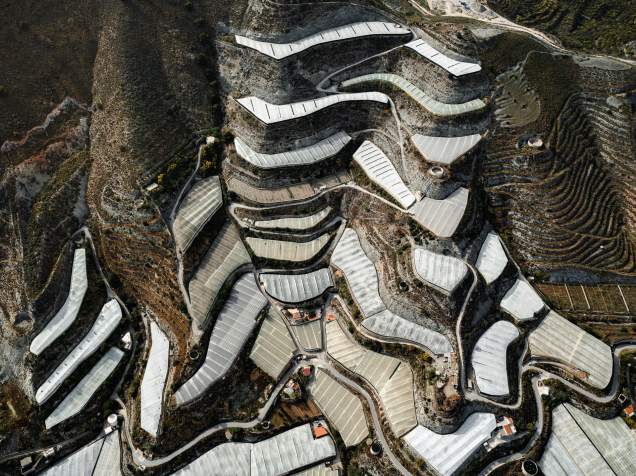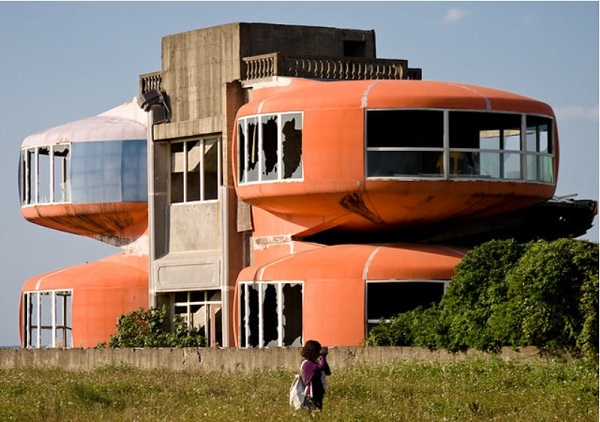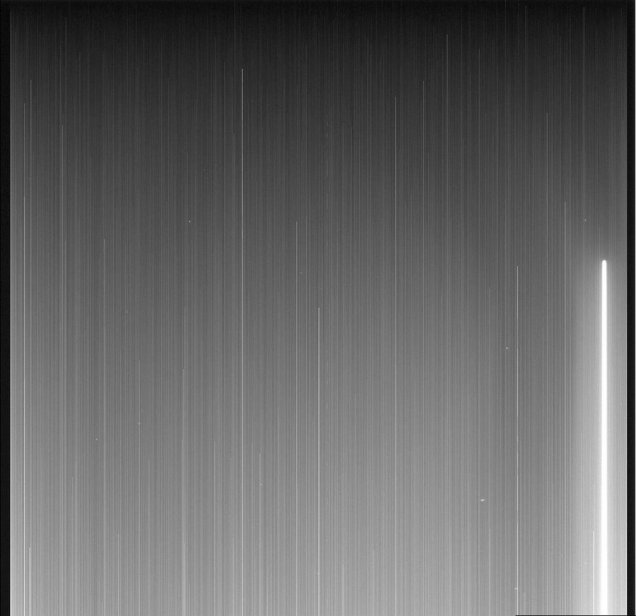Ruins and abandoned places are often seen as plain and boring. Granted, the color of untreated, inexpensive rock (which the majority of surviving buildings tend to be made from) often isn’t anything to write home about. But in our fiction, ruined areas don’t need to be austere and grim. You can even find real-life ruins in a variety of styles for inspiration.
For example, houses in Herculaneum famously featured colorful mosaics and painted murals. In addition, paint was generously applied elsewhere, like these pillars and external wall from House of the Relief of Telephus show:
In Sanzhi, Taipei County, Taiwan, clusters of colorful pod houses or UFO houses once stood:
It’s not always humans who have applied the color onto the ruins either. At the ancient Maya site called Bonampak or Ak’e, in the Chiapas area, Mexico, strikingly orange lichen is taking over building facades:
(Check out the Bonampak Wikipedia article for a stunning relief carving and a painted mural!)
In Dutch photographer Roman Robroek’s shots we can see that a ruin definitely need not be grey, blocky, and boring. Partly overrun by nature could mean an almost orderly takeover, like in the photo of a Gothic-style former chapel built at the end of 19th century, below:
Beautiful, brightly colored arches among rubble from the childhood house of Lebanese singer Fairuz (who was born in 1934) in Beirut form a striking contrast to the greenery outside:
Finally, a still strikingly turquoise—if peeling—underside of a round staircase:
It vaguely reminds me of peacock feathers! I wish the photographer gave us a little more information about the history of this place. Browse more via Colossal or at Robroek’s website.
Since they exist in real life, I would be delighted to read about vibrantly colored and visually striking abandoned places in my genre fiction, too.
Images: Herculaneum by Andy Hay via Flickr (CC BY2.0). Sanzhi Pod Houses by mingshah via Flickr. Bonampak by Carsten ten Brink via Flickr (CC BY-NC-ND 2.0). Images by Roman Robroek: Former chapel. Arches at the house of Fairuz. Blue staircase.
Out There is an occasional feature highlighting intriguing art, spaces, places, phenomena, flora, and fauna.




















